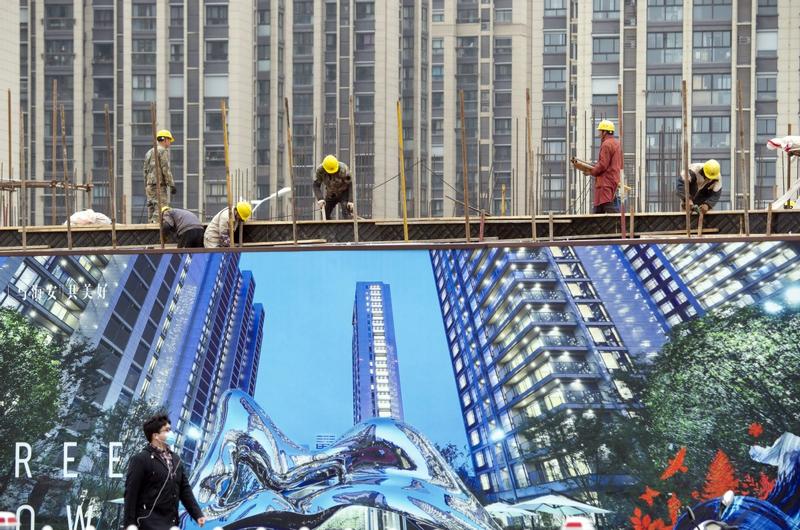 Workers at the construction site of a property in Nantong, Jiangsu province. (XU JINGBAI / FOR CHINA DAILY)
Workers at the construction site of a property in Nantong, Jiangsu province. (XU JINGBAI / FOR CHINA DAILY)
As "housing is for living in, not for speculation" remains the overriding mantra for the property sector, prices of both new and pre-owned homes in China's major cities gained at a slower pace in October from a year earlier, and experts expect adjustments will lead to a better supply-demand balance in the housing sector.
The majority of the nation's 70 large and medium-sized cities saw home prices edge down month-on-month in October, with new and pre-owned home prices growing at a slower pace from a year ago, said Sheng Guoqing, chief statistician with the National Bureau of Statistics.
New home prices in the 70 major cities tracked by the NBS rose 2.8 percent year-on-year in October, but dipped 0.3 percent from September.
Top-tier cities' new home prices saw little change on average from the previous month. Among them, Beijing and Shanghai reported increases of 0.6 percent and 0.1 percent in transaction prices, respectively, against Shenzhen's 0.2 percent decrease and Guangzhou's 0.3 percent decline.
Compared to a year ago, the four benchmark cities' new home prices grew at a slower pace of 5 percent, 0.3 percentage point less than September.
The 31 second-tier cities, mostly provincial capitals, slid 0.2 percent on average month-on-month. Compared to last year, their average prices grew 3.7 percent. Among the 35 third-tier cities, the two figures were negative 0.3 percent and positive 1.8 percent, respectively, according to the NBS.
"This is the second month in a row that the new home price index saw a mild drop from the previous month, sending an alert that attention should also be paid to prevent the housing market from being overcooled," said Yan Yuejin, director of the Shanghai-based E-house China Research and Development Institution.
"Along with the financing tweaks to ease credit for genuine homebuyers and measures to encourage rigid home demand, existing policies are expected to gradually take effect and further stabilize the home market," said Yan, adding that the sales recovery in some Chinese cities will help stabilize the home price index in November.
The cooling sentiment for home purchases is more obvious in the pre-owned housing market. First-tier cities saw existing home prices retreat 0.4 percent from the previous month. Specifically, Guangzhou reported the largest month-on-month drop of 0.6 percent in transaction prices among the four mega cities, followed by falls in Beijing of 0.5 percent, Shanghai of 0.4 percent and Shenzhen of 0.2 percent.
The four cities on average witnessed a 6.7 percent growth year-on-year in existing home prices.
Used home prices in the 31 second-tier cities declined 0.3 percent from a month ago, but grew 2.5 percent year-on-year. The 35 third-tier cities saw existing home prices lose 0.3 percent from the previous month, despite an increase of 1 percent from last year.
"Although more cities experienced home price adjustments in October, about 80 percent of their home price declines were within 0.5 percent, showing Chinese cities' home prices are fundamentally stable," said Xu Xiaole, chief analyst with the Beike Research Institute.
Since the second half, issued mortgages have been shrinking, and promotions and discounts offered by real estate developers are adding downside pressure to home prices, Xu said.
Similarly, more homeowners are willing to offer discounts for their residential properties in the secondary market, he added.
Since October, policy fine tuning regarding financial credit supported the restoration of reasonable home buying demand, and the better-off financing environment for real estate enterprises also effectively improved market expectations. Experts expect market confidence will further improve next year.


